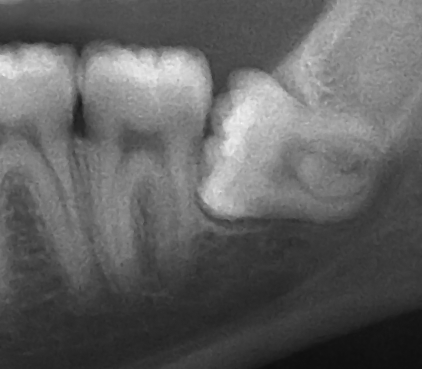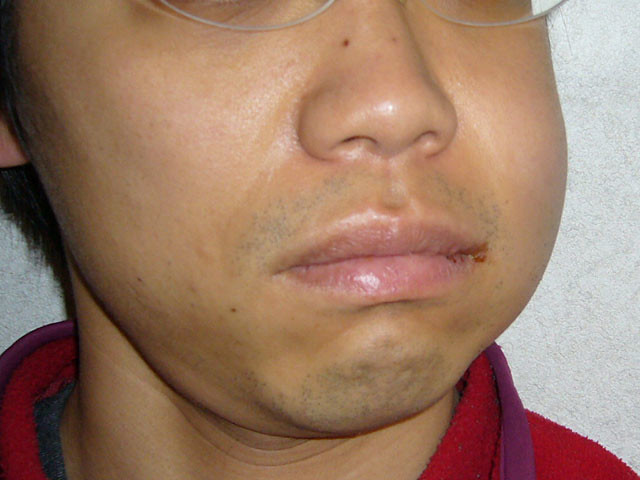Wisdom teeth are the third and final set of molars that the majority of people get in their late teens or early twenties. Sometimes these teeth are often a valuable asset to the mouth when healthy and properly aligned, but more often, they’re misaligned and need removal.
When wisdom teeth are misaligned, they’ll position themselves horizontally, be angled toward or far from the second molars, or be angled inward or outward. Poor alignment of wisdom teeth can crowd or damage adjacent teeth, the jawbone, or nerves.
Wisdom teeth can also be impacted — they’re enclosed within the soft tissue and/or the jawbone or only partially break through or erupt through the gum. Partial eruption of the wisdom teeth allows a gap for bacteria to enter around the tooth and cause an infection, which ends up in pain, swelling, jaw stiffness, and general illness. Partially erupted teeth are more susceptible to cavity and gum disease,e because their hard-to-reach location and awkward positioning makes brushing and flossing difficult.
What You Should Know About Wisdom Teeth
Wisdom teeth are the most commonly missing teeth in adult mouths. You’re also more likely to have issues with these molars than with the other teeth.
How Do I do know if I even have Wisdom Teeth?
Ask your dentist about the positioning of your wisdom teeth. He or she may take an X-ray periodically to evaluate for the presence and alignment of your wisdom teeth. Your dentist can also plan to send you to an oral surgeon for further evaluation.

Your dentist or oral surgeon may recommend that your wisdom teeth be extracted even before problems develop. this is often done to avoid a more painful or more complicated extraction which may need to be done a couple of years later. Removal is simpler in youngsters when the wisdom teeth roots aren’t yet fully developed and also the bone is less dense. In older people, recovery and healing time tend to be longer.
How Are Wisdom Teeth Removed?
The relative ease at which your dentist or oral surgeon can extract your wisdom teeth depends on their position and stage of development. Your oral health care provider is able to give you an idea of what to expect during your pre-extraction exam. A wisdom tooth that’s fully erupted through the gum is often extracted as easily as the other tooth. However, a wisdom tooth that’s underneath the gums and embedded within the jawbone would require an incision into the gums then removal of the portion of bone that lies over the tooth. Often, for a tooth during this situation, the tooth is going to be extracted in small sections instead of removed in one piece to reduce the quantity of bone that must be removed to get the tooth out.
What Happens During Wisdom Teeth Removal?
Before your wisdom teeth are pulled, the teeth and therefore the surrounding tissue is going to be numbed with a local anesthetic — a similar type used to numb a tooth before having a cavity filled. additionally to the local anesthetic to numb the pain, you and your dentist or oral surgeon may decide that a sedative is desired to manage any anxiety. Sedating medications that would be selected include inhalation anesthetic (otherwise known as “laughing gas”), an oral sedative (for example, Valium), or an intravenous sedative (administered via an injection into your veins). If nitrous oxide is given, you will be ready to drive yourself home. If any of the other medications are selected, you’ll need someone to drive you both to and from the appointment.
What Does Recovery Involve After Wisdom Teeth Are Pulled?
After having your wisdom teeth removed, the speed of your recovery depends on the degree of difficulty of the extraction (a simple extraction of a totally erupted tooth versus a tooth impacted into the jawbone). generally, here’s what to expect.
During the first 24 hours
Bleeding may occur for several hours after tooth extraction. to manage it, position a chunk of clean moist gauze over the empty socket and bite down firmly. Apply constant pressure for about 45 minutes. A moistened tea bag is an efficient alternative. The tannic acid in tea helps to heal blood clots to create (blood clots function similarly to scab over an open wound). Repeat this process if a little degree of bleeding continues; if heavy bleeding continues to occur, contact your dentist or oral surgeon. Avoid rinsing or spitting for twenty-four hours after tooth extraction, avoid “sucking” actions (for example, don’t drink beverages through straws or smoke) and avoid hot liquids (such as coffee or soup). These activities can dislodge the clot, causing a dry socket (see below) to develop.

Facial swelling within the area where the tooth was extracted typically occurs. to reduce swelling, place a bit of ice, wrapped in a cloth, thereon area of your face on a schedule of 10 minutes on, followed by 20 minutes off. Repeat as necessary during this first 24-hour period.
Pain medications, like acetaminophen (Tylenol) or ibuprofen (Motrin or Advil), are often taken for minor pain. Your dentist or oral surgeon may prescribe stronger pain relievers, if necessary.
Antibiotics which will have been prescribed before tooth extraction (to treat any active infection around the molar to be extracted) should continue to be taken until the complete prescription is gone.
Foods should be restricted to a diet until all the numbness from anesthesia has worn off. Eat soft foods for a couple of days. Also, avoid alcohol if you’re also taking narcotic pain medication.
Continue to brush your teeth, but avoid the teeth directly neighboring the extracted tooth during the first 24 hours. On day two, resume the gentle brushing of your teeth. don’t use commercial mouth rinses — these can irritate the extraction site.
After 24 hours
Facial swelling within the area of the tooth extraction should be treated with heat after the first 24 hours of ice. Apply a moist warm towel to the area on a 20-minute on, 20-minute off schedule. Repeat as necessary. keep in mind that swelling usually peaks 2 to 3 days after the procedure.
Rinse your mouth with warm salt water (1/2 teaspoon of salt in a cup of warm water) after meals and before bed. don’t use commercial mouth rinses unless your dentist directs you to.
Stitches, if used and if not of the self-dissolving type, got to be removed by your oral health care provider in about 1 week. If you do require stitches, ask what type you have been given.
Watch for signs of dry socket (described below). This condition requires treatment by your oral health care provider.
Complete healing doesn’t occur for a couple of weeks to a couple of months following the extraction. However, usually within the first week or two, enough healing has taken place for use of your mouth to be reasonably comfortable within the area of the extraction. Your dentist will explain what to expect in your specific case.
What Are Potential Complications of wisdom tooth removal?
Two of the more important complications after having your wisdom teeth removed include:
Dry socket

Dry socket may be a common complication that happens when either a blood clot has failed to form within the extracted socket alternatively the blood clot that did form has been dislodged. Without clot formation, healing is going to be delayed. When it happens, a dry socket typically occurs 3 or 4 days following the extraction and is accompanied by pain (ranging from “dull” to moderate to severe) and a foul mouth odor. Your dentist or oral surgeon will treat the dry socket by placing medication within the socket.
Paresthesia
Paresthesia may be a rarer complication of wisdom teeth extraction. Wisdom teeth entrapped within the jawbone are often near to nerves. Sometimes these nerves may be bruised or damaged during the tooth removal process. The result’s a numbness (called a paresthesia) of the tongue, lip, or chin which will last some days, weeks, months, or may even be permanent.
How Much Does Wisdom Teeth Extraction Cost?
Simple extraction of a wisdom tooth can cost as little as $99 per tooth. the cost of wisdom teeth that are impacted can cost between $230 and $340 and even more. Because costs vary in different areas of the country, contact your dentist or oral surgeon for their charges. Also, ask both your dental insurance carrier and medical insurance provider. one among the opposite sorts of insurance may cover some of the value of wisdom teeth removal.
